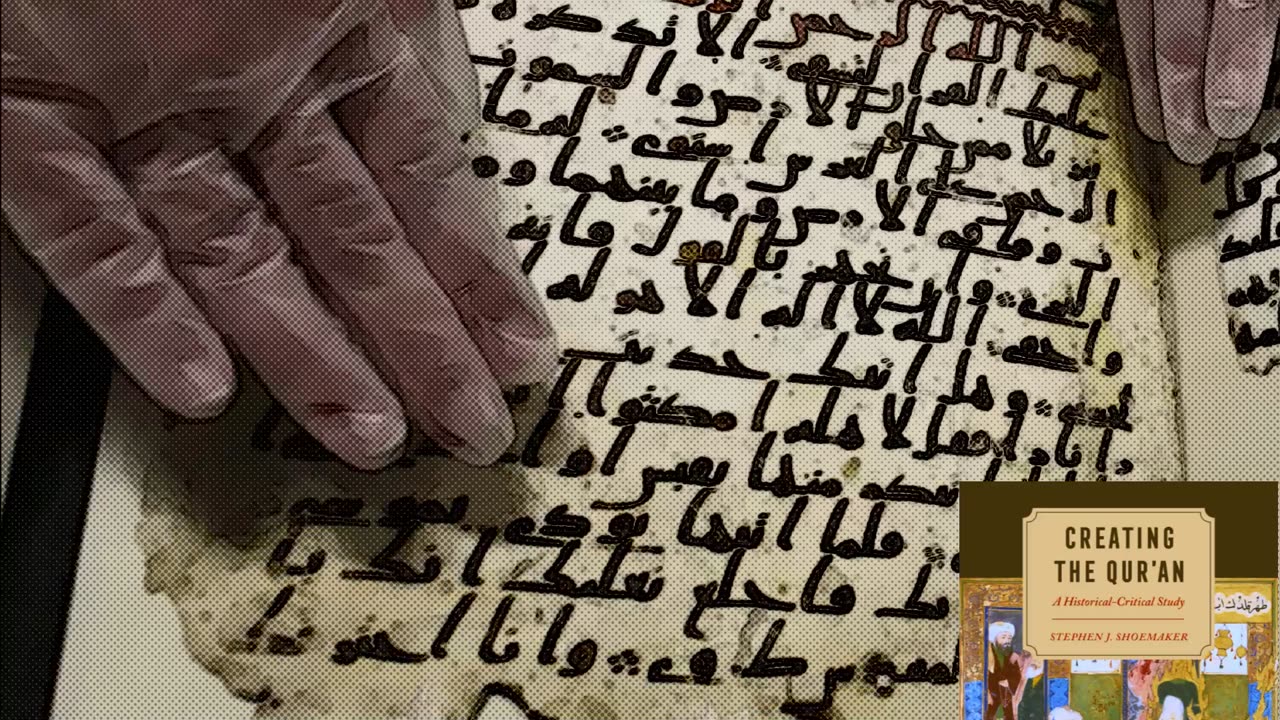Premium Only Content

Birmingham Quran Manuscript 02
The so-called “Birmingham Quran” consists in fact of just two leaves from an ancient manuscript that have been bound together with seven leaves from another manuscript. Yet Fedeli, who “discovered” the Birmingham manuscript, has also identified sixteen folios in the Bibliothéque nationale de France from the same early manuscript (MS BnF328c).
There are thus eighteen total folios from this early manuscript, and their analysis forms a major part of Fedeli’s dissertation, which convincingly demonstrates that the text written on the parchment seems to be significantly more recent.
Despite being credited with discovering the world’s oldest Quran in the press, Fedeli has from the start insisted that this witness to the Quran should not necessarily be dated as early as this particular radiocarbon analysis might suggest.
The dating of the Birmingham Quran only becomes more complicated after a careful examination of the text that has been written onto the parchment folios.
In her dissertation, Fedeli demonstrates that the Birmingham Qur'an, much like the Tubingen Qur'an, bears the marks of production at a relatively later stage in the history of the Quranic text.
“On the basis of the analysis of the palaeographical features, i.e. the overall appearance of the script and habits of the scribe, as well as of the analysis of the content from a linguistic point of view,”
she establishes that
“it is likely to assume that the first hand in charge of writing MS PaB [i.e., the Paris and Birmingham fragments] was copying the text from an exemplar, and in accomplishing such a task, he expressed his mastery, e.g. in planning the page layout and in executing a rather well-proportioned relationship between letter blocks and empty spaces.”
As she continues to explain,
‘The mechanism of copying from an exemplar implies consequently that the work could not have been executed very early, as the written exemplar requires a period of time for producing the exemplar and also the establishment of a mechanism of copying from an authoritative text. Moreover, the regular and coherent presence of a blank line between two sitras seems to be interpreted as a sign of a later practice, as it was introduced and established during the so-called second masahif project accomplished in the period between 84-85 AH (703-5 CE), whose main initiator was al-Hajjaj (d. 95/713).
Déroche likewise identifies a similar date for this Qurian’s production based on the same qualities of the text: it clearly bears the marks of a high level of sophistication in writing that one would associate with production at the imperial chancery of ‘Abd al-Malik.
From RADIOCARBON DATING AND THE ORIGINS OF THE QUR'AN, pages 80 and 81 of Creating the Qur’an: A Historical-Critical Study By Stephen J. Shoemaker
-
 1:44:50
1:44:50
Glenn Greenwald
5 hours agoTrump’s Latest Interviews Reveal A More Focused Vision; Why The CNN Syria Rescue Deserves Skepticism; Is There Anyone Who Opposes All Luigi-Style Vigilantism? | SYSTEM UPDATE #379
49.1K41 -
 LIVE
LIVE
Flyover Conservatives
21 hours agoDOCTOR WARNS: The Invisible Threat to Your Health - Basima Williams | FOC Show
580 watching -
 LIVE
LIVE
Precision Rifle Network
1 day agoS3E11 Guns & Grub with Rex & Joel
484 watching -
 1:01:44
1:01:44
Donald Trump Jr.
7 hours agoThe MAGA Engine That Could: Interview with Steve Bannon | TRIGGERED Ep.198
119K102 -
 1:48:08
1:48:08
Roseanne Barr
5 hours ago $8.89 earnedVibrator Burns with Shannon Hughey | The Roseanne Barr Podcast #78
52.6K22 -
 58:33
58:33
The StoneZONE with Roger Stone
7 hours agoWhat is Really Happening in Syria? w/ General Michael Flynn | The StoneZONE w/ Roger Stone
19.9K6 -
 1:16:47
1:16:47
Josh Pate's College Football Show
6 hours ago $0.91 earnedSEC Bias: True Or False | Transfer Portal Latest | Belichick To UNC | Dan Mullen & Rich Rod Return
15.1K1 -
 1:00:07
1:00:07
Havoc
5 hours agoTouring 101: The Best, The Worst & How to Survive Them | Stuck Off the Realness Ep. 22
16.8K -
 LIVE
LIVE
Melonie Mac
1 day agoThe Game Awards Live Reaction! Go Boom Live Ep 31!
417 watching -
 1:36:16
1:36:16
The Big Mig™
12 hours agoIs Paul Le Roux Satoshi Nakamoto w/ Evan Ratliff
25.9K7